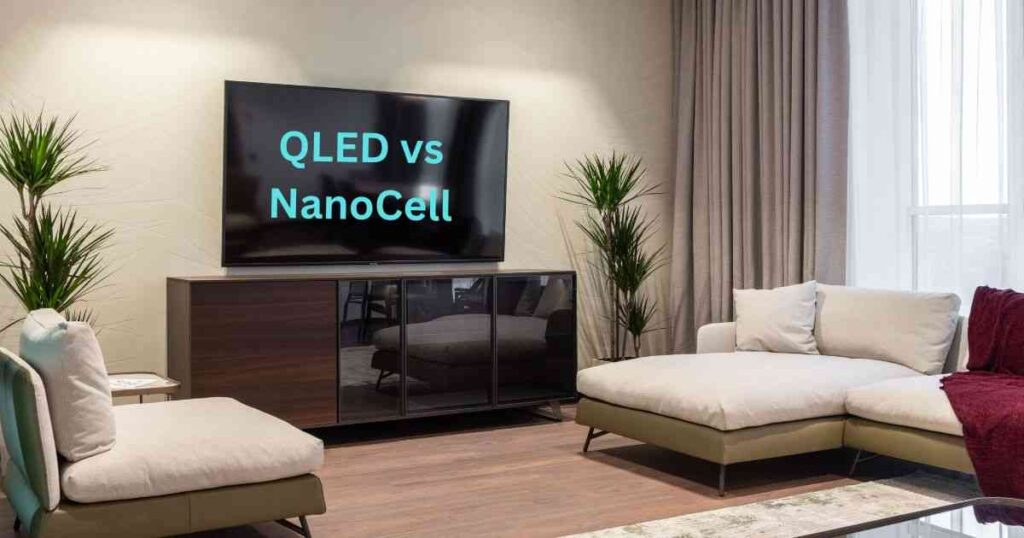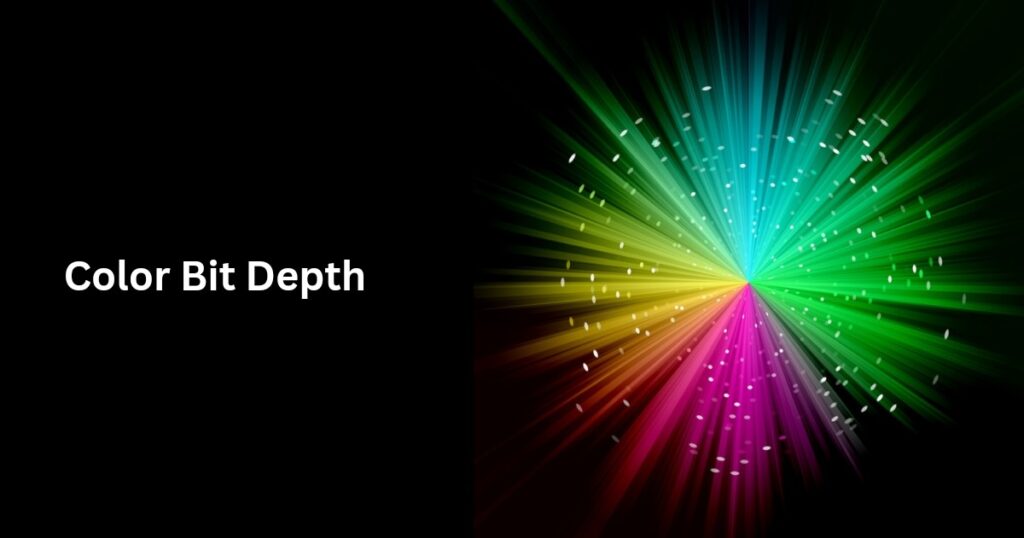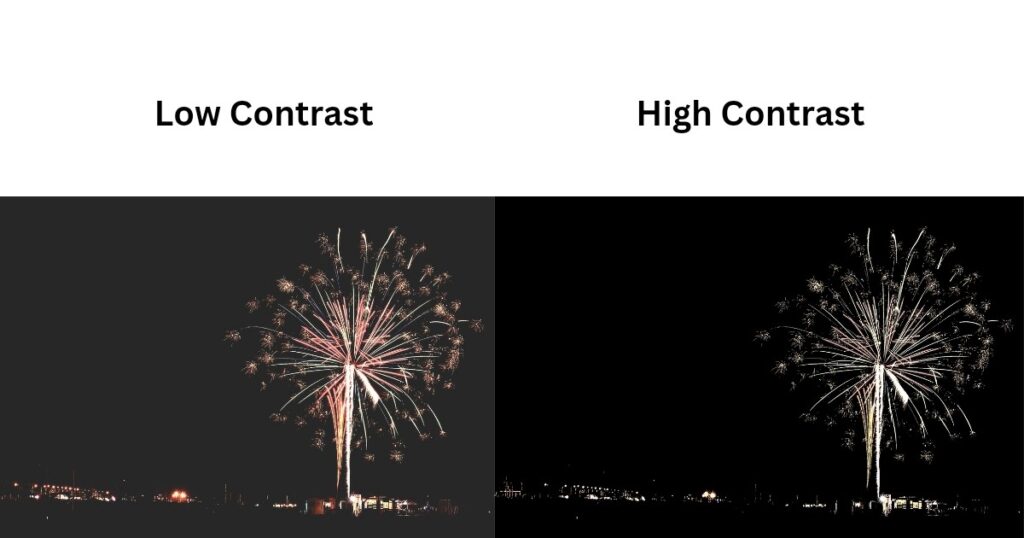QLED vs NanoCell: What’s the difference and which TV to buy?

The LCD TVs about which we are going to discuss here are QLED and NanoCell.
“QLED” is a term used by Samsung, TCL, and few other brands to describe their advanced LED TVs, while “NanoCell” is a name exclusively used by LG for its upgraded LED TVs.
Although they go by different names, both QLED and NanoCell are essentially LED-backlit LCD TVs with unique enhancements.
So, what sets them apart, and how do these differences affect performance?
Let’s dive into the comparison: QLED vs NanoCell — Let’s get started.
Note: The comparison is made between a QLED TV and a NanoCell TV with similar price points.
What is a QLED TV?
“QLED” stands for Quantum Light Emitting Diode.
It is a type of LCD TV that uses an LED backlight combined with a layer of quantum dots which are tiny semiconductor crystals, just a few nanometers in size.
These quantum dots are positioned in front of a backlight made up of small blue LEDs.
When the blue light hits the quantum dots, they emit either red or green light, depending on their size.
The resulting red and green light, along with the original blue light, combine to form white color which passes through the LCD layers, and then through a color filter before reaching the LCD display panel.
Because quantum dots are highly efficient at producing precise colors, QLED TVs deliver vibrant images with a wide color gamut.
What is a NanoCell TV?
The term “Nano” refers to a layer of particles that are nanometer-sized and possess unique properties.
While these particles are also extremely small, they differ from the quantum dots used in QLED.
Similar to QLED, NanoCell TVs are also LCD-based and utilize an LED backlight.
However, what sets them apart is that NanoCell TVs use a layer of nanoparticles in the display, unlike QLEDs that use quantum dots.
These nanoparticles work by absorbing unwanted or impure colors before they reach the screen.
So, while quantum dots emit light, nanoparticles tend to absorb light, specifically the impure colors, thus helping to enhance the overall color purity on the display.
QLED vs NanoCell: Key Differences
Contrast and Viewing Angles
A QLED TV generally uses a VA panel, while NanoCell TVs are built with an IPS panel.
The VA panel offers higher native contrast, which allows QLED TVs to produce deeper blacks compared to NanoCell TVs.
Thanks to the quantum dot technology, QLEDs deliver accurate colors, making HDR content look very good, especially in dimly lit or dark rooms.
Additionally, QLEDs can achieve high brightness levels, helping them combat glare in bright environments.
In contrast, NanoCell TVs with IPS panels tend to display blacks that appear more greyish, and there is often blooming around bright objects due to the lower native contrast of IPS panels.
As a result, HDR content doesn’t look that impressive on a NanoCell.
However, IPS panels are known for their wider viewing angles, and therefore, NanoCell TVs maintain color accuracy even from larger off-center viewing positions, unlike QLEDs with VA panels, which can shift colors when viewed from corner angles.
Color Gamut
A QLED TV offers a wider color gamut compared to a NanoCell TV. This is because quantum dots in a QLED are highly effective at emitting pure, monochromatic colors.
On the other hand, a NanoCell TV doesn’t achieve the same level of color range.
This may be likely due to the fact that the nanoparticles in a NanoCell TV absorb light rather than emit it.
However, the colors on a NanoCell are still purer than those on a standard LED TV, as the nanoparticles help filter out dull or impure tones.
Peak Brightness and Color Volume
As we’ve discussed, in QLED TVs, quantum dots are highly efficient at emitting light, whereas in NanoCell TVs, the nanoparticles tend to absorb some of the light.
This difference may allow QLED TVs to be brighter than NanoCell TVs, helping them combat glare more effectively.
Additionally, thanks to more number of brightness levels and the wide color gamut, QLED achieves significantly higher color volume compared to NanoCell.
As a result, highlights on a QLED TV appear brighter and more realistic, displayed at accurate brightness levels, which contributes to superior HDR performance.
Lifespan and Response Time
Both QLED and NanoCell TVs are LCD-based technologies, meaning they use inorganic pixels that don’t degrade over time.
As a result, neither technology is susceptible to pixel degradation or burn-in, which may be common concerns for OLED displays.
When it comes to response time, both QLED and NanoCell TVs typically have response times of over 5 ms, which is decent but slower compared to OLEDs (Organic Light Emitting Diode), which can respond in just around 0.1 ms.
Therefore, when playing fast-paced games or high-action scenes, both QLED and NanoCell TVs might experience some motion blur or screen tearing.
QLED vs NanoCell: Which is the best TV?
A QLED TV outperforms a NanoCell TV in several areas, including a wider color gamut, superior reflection handling, higher peak brightness to fight glare more effectively, and much better contrast and black levels, leading to enhanced HDR performance.
While NanoCell TVs offer superior viewing angles, QLEDs still provide good viewing angles for most of the practical uses.
What’s More?
The contrast ratio in both QLED and NanoCell TVs can be significantly improved with advanced backlighting technology.
When these TVs incorporate mini-LED backlighting instead of traditional LED backlighting, they are referred to as Neo QLEDs (for QLED) and QNEDs (for NanoCell).
In that case, the comparison will shift from “QLED vs NanoCell” to “Neo QLED vs QNED”.
And if you’re looking for endless contrast with nearly instant response times, take a look at OLED TVs.


